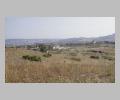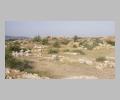| Context: | Miletus |
| Type: | Stoa |
| Summary: | A rectangular level area in the middle of the peninsula of Miletus, near the Bay of Lions; gradually enclosed by stoas, forming a commercial center for the city. |
| Date: | ca. 350 BC - ca. 160 AD |
| Dimensions: | Overall dimensions of rectangular area enclosed by the two stoas: ca. 50 m. x 87.51 m. Dimensions of north L-shaped stoa: length of stylobate of north wing 50.72 m. Depth of portico of north wing 5.91 m. Length of stylobate of west wing 39.13 m. Depth of portico of west wing 6.01 m. Intercolumniation of north wing 2.10 m. Intercolumniation of west wing 2.09 m. Dimensions of south L-shaped stoa: length of stylobate of south wing 58.30 m. Depth of portico of south wing 7.10 m. Length of stylobate of west wing 45.60 m. Depth of portico of west wing 6.90 m. Intercolumniation of west wing 2.09 m. Intercolumniation of south wing 2.56 m. |
| Region: | Ionia |
| Period: | Hellenistic/Roman |
Architectural Order:
Doric.
Plan:
In plan, the North Market consists of a rectangular space enclosed at the north and west by an L-shaped stoa, and at the south and west by a second L-shaped stoa. Both stoas were one-aisled; the north stoa had rows of shops behind its north and west wings, while the south stoa had none. In the middle of the west wall of the Market stood a small building interpreted as a temple, with square cella, deep pronaos and four Ionic prostyle columns. An enclosing wall, built later, also ran along the east side of the Market, with a columnar gateway in the middle.
Date Description:
No building inscriptions or associated statue bases are preserved, and the dating of the various elements of the North Market is based on the style and technique of the preserved architectural members. The employment of a poros breccia in the foundations of the south L-shaped stoa, combined with other differences in material and technique, suggests that the south L-shaped stoa is later than the north.
History:
The level area which the North Market occupies was set aside as a market location during the rebuilding of Miletus following the Persian destruction. The earliest building in the vicinity of the North Market is a rectangular structure built of gneiss, located to the south-west of the market. This may have functioned as the prytaneion in the fourth century B.C. In the late fourth century B.C., a long stoa was built to the north, near the harbor (the so-called Stoa by the Harbor). Probably at about the same date the first of the stoas of the North Market, the north L-shaped stoa, was constructed. Behind this one-aisled L-shaped stoa to the west was a peristyle court, which may have served as the first commercial market for the city and probably constitutes the earliest market court in the ancient world. There are no traces of building activity at the North Market in the third century B.C. In the mid-second century B.C., an additional L-shaped, one-aisled stoa was built, running along the south and west of the North Market. Thus the market was now enclosed by a horseshoe-shaped complex of stoas. In the mid-first century B.C. an enclosing wall with a central columnar gateway was built along the east of the North Market; previously this area had remained open. In the second century A.D. the east side of the North Market was more completely enclosed by means of a row of rooms, most likely shops. Also dating to the Roman period is the addition of an upper story to the south L-shaped stoa.
Other Notes:
A number of monuments from various periods were erected in the North Market: in the center are the poros foundations of a square structure, probably the Market Altar. In the north-west of the courtyard area are the foundations of an inscribed stele, the so-called "Blood Inscription," dating to the fifth century B.C., in which the overthrown oligarchs are proscribed (
Other Bibliography:


